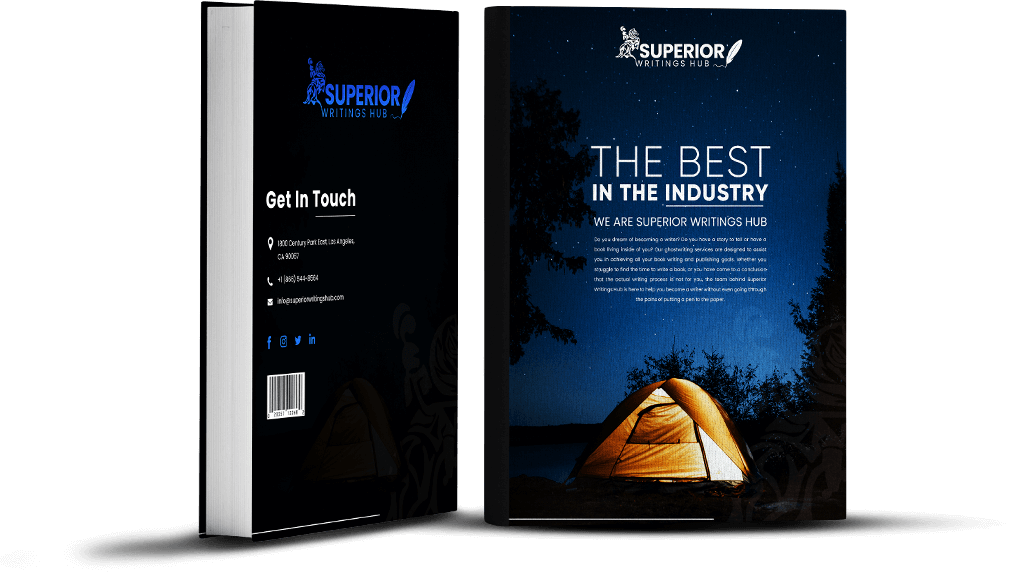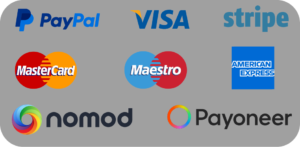The British publishing industry has undergone significant changes over the last decade. The days of aspirant writers having to knock on many doors in search of a conventional publisher to find their work are long gone. Self-publishing has evolved now into a respectable and profitable route for UK authors to distribute their stories worldwide.
Self-publishing sites give first-time Manchester writers, cookbook authors in Edinburgh, business experts in London, unheard-of chances to directly contact readers. But given so many choices, deciding on the correct platform can feel taxing.
This article therefore looks at the main self-publishing sites accessible to UK writers, therefore guiding your selection of the finest platform to release your next masterpiece.
Here are the six major platforms we will be discussing:
- Amazon KDP
- IngramSpark
- Lulu
- Barnes & Noble Press
- BookBaby
- Kobo Writing Life
The Self-Publishing Revolution in the UK
Self-publishing is a publishing revolution not only a trend. British writers are opting more and more to keep creative control, retain better royalty rates, and publish on their own schedule. With many self-published writers reaching bestseller status and even gaining conventional publishing deals later, the stigma once connected with self-publishing has mostly vanished.
Selecting the correct platforms for your particular objectives, budget, and target audience can help you to succeed. Let’s explore the most often used choices open to UK writers.
Pros and Cons of Self-Publishing Options in the UK
Amazon KDP: The Undisputed Giant
Amazon’s Kindle Direct Publishing (KDP) remains the most popular choice for self-published authors worldwide, and UK writers are no exception.
Pros of Amazon KDP
- Massive Market Reach: Amazon dominates the UK book market, making it the first place most readers look for new books. Your work gets instant access to millions of potential customers.
- User-Friendly Interface: KDP’s publishing process is straightforward, even for complete beginners. You can upload your manuscript, design a cover using their tools, and have your book live within 24-72 hours.
- Excellent Royalty Rates: Authors can earn up to 70% royalties on ebooks priced between £1.99 and £9.99, which is significantly higher than traditional publishing rates.
- No Upfront Costs: Publishing through KDP is completely free. You only pay when books are sold through their print-on-demand service.
KDP Select Benefits: Exclusive enrollment in KDP Select provides access to Kindle Unlimited, promotional opportunities, and higher royalty rates in certain markets.
Cons of Amazon KDP
- Over-Saturation: With millions of books published annually on Amazon, standing out becomes increasingly challenging without significant marketing efforts.
- Limited Print Distribution: While KDP offers print-on-demand services, distribution is primarily limited to Amazon’s ecosystem, missing out on bookstore placement.
- Dependency Risk: Relying solely on Amazon means your business depends entirely on their policies and algorithm changes.
- Quality Concerns: The ease of publishing means the platform is flooded with low-quality content, which can affect overall perception.
IngramSpark: The Professional’s Choice
IngramSpark has earned its reputation as the go-to platform for authors seeking professional-grade publishing services and wide distribution.
Pros of IngramSpark
- Global Distribution Network: IngramSpark’s extensive network includes bookstores, libraries, and online retailers worldwide, giving your book maximum exposure.
- Superior Print Quality: Their printing standards are higher than most competitors, producing books that meet professional publishing industry standards.
- Bookstore Placement: Unlike many self-publishing platforms, IngramSpark-published books can actually appear on bookstore shelves.
- Flexible Pricing: Authors have complete control over pricing and can offer wholesale discounts to retailers, making books more attractive to bookstores.
- UK Printing Facilities: With printing facilities in the UK, delivery times are faster and shipping costs lower for British customers.
Cons of IngramSpark
- Learning Curve: The platform is more complex than user-friendly options like Amazon KDP, requiring technical knowledge about print specifications.
- Setup Costs: Unlike free platforms, IngramSpark charges setup fees (around £38 for print books), though they often run promotions waiving these fees.
- Strict Quality Requirements: High standards mean manuscripts must meet specific formatting requirements, potentially requiring professional assistance.
- Slower Payment Processing: Royalty payments can take longer to process compared to other platforms.
Lulu: The Creative Freedom Platform
Lulu has been serving self-published authors since 2002, positioning itself as a platform that prioritizes creative freedom and author control.
Pros of Lulu
- No Setup Fees: Publishing is free, making it accessible for authors on tight budgets.
- Creative Control: Authors retain complete ownership and control over their work, including all rights and pricing decisions.
- Multiple Format Options: Supports various book formats, including hardcover, paperback, and ebooks, with extensive customization options.
- Global Distribution: Partners with major retailers and distributors to get books into stores worldwide.
- Author-Friendly Terms: No exclusive contracts or hidden fees, allowing authors to publish simultaneously on other platforms.
Cons of Lulu
- Limited Marketing Support: Unlike larger platforms, Lulu provides minimal marketing assistance or promotional opportunities.
- Smaller Market Presence: Less visibility compared to Amazon or IngramSpark, potentially resulting in lower sales.
- Variable Print Quality: While generally good, print quality can be inconsistent, particularly for complex layouts or color books.
- Complex Pricing Structure: Understanding royalty calculations and wholesale pricing can be confusing for new authors.
Barnes & Noble Press: The American Giant’s UK Reach
Barnes & Noble Press allows UK authors to tap into the American market while building their international presence.
Pros of Barnes & Noble Press
- Access to US Market: Direct access to Barnes & Noble’s extensive American customer base.
- Competitive Royalties: Offers up to 65% royalties on ebooks and reasonable rates for print books.
- Professional Tools: Provides quality formatting and cover design tools.No Upfront Costs: Free to publish with print-on-demand services.
Cons of Barnes & Noble Press
- Limited UK Presence: Barnes & Noble doesn’t have physical stores in the UK, limiting local market penetration.
- No Guaranteed Bookstore Placement: Despite being published through Barnes & Noble Press, books aren’t automatically placed in physical stores.
- Smaller Ebook Market Share: Barnes & Noble’s Nook platform has significantly less market share than Amazon’s Kindle.
- Geographic Restrictions: Some features and promotional opportunities may be limited for international authors.
BookBaby: The Full-Service Solution
BookBaby positions itself as a comprehensive publishing solution, offering everything from editing to marketing services.
Pros of BookBaby
Complete Service Package: Offers professional editing, cover design, formatting, and marketing services under one roof.
- Wide Distribution: Distributes to over 180 countries through partnerships with major retailers and distributors.
- No Exclusivity Requirements: Authors can publish simultaneously on other platforms.
- Professional Quality: High-standard services that can make self-published books indistinguishable from traditionally published ones.
- Ongoing Support: Provides customer service and technical support throughout the publishing process.
Cons of BookBaby
- Higher Costs: Services come with significant upfront costs, making it expensive for budget-conscious authors.
- Lower Royalty Rates: To offset their services, BookBaby takes a larger percentage of sales.
- Package Complexity: Multiple service packages can be confusing, and costs can quickly escalate.
- Less Author Control: Full-service approach means less hands-on control over certain aspects of the publishing process.
Kobo Writing Life: The International Alternative
Kobo Writing Life offers UK authors access to international markets, particularly strong in Canada, Australia, and parts of Europe.
Pros of Kobo Writing Life
- International Reach: Strong presence in markets where Amazon is less dominant, particularly Canada and several European countries.
- Author-Friendly Policies: No exclusivity requirements and competitive royalty rates up to 70%.
- Easy Publishing Process: Simple, straightforward interface similar to Amazon KDP.
- Promotional Opportunities: Regular promotional programs and marketing opportunities for authors.
- Multi-Format Support: Supports various ebook formats and provides conversion tools.
Cons of Kobo Writing Life
- Smaller UK Market Share: Limited presence in the UK market compared to Amazon.
- Fewer Marketing Tools: Less sophisticated marketing and analytics tools compared to larger platforms.
- Print Limitations: Primarily focused on ebooks with limited print publishing options.
- Slower Growth: Smaller user base means potentially slower sales growth compared to Amazon.
Making the Right Choice for Your Publishing Journey
Selecting a self-publishing platform is more about finding the greatest fit for your particular objectives, budget, and target audience than it is about determining the “best” choice.
Many accomplished UK writers employ a multi-platform strategy, drawing on the advantages of many services. For maximum reach, for instance, you might utilise Amazon KDP; for bookshop distribution, Ingram Spark; and for international markets Kobo Writing Life.
Think about your priorities here: Are you seeking professional quality, creative control, maximum visibility, or all-encompassing offerings? Your response will help you to find the venues consistent with your publishing objectives.
The scene of self-publishing is always changing and presents more chances than it did years ago for UK writers. Whether you decide on one platform or multiple, the secret to success is knowing your possibilities, getting ready with quality material, and engaging your readers. Starting with the first book you publish, decide on the venue that will enable you to present your story as you choose.


